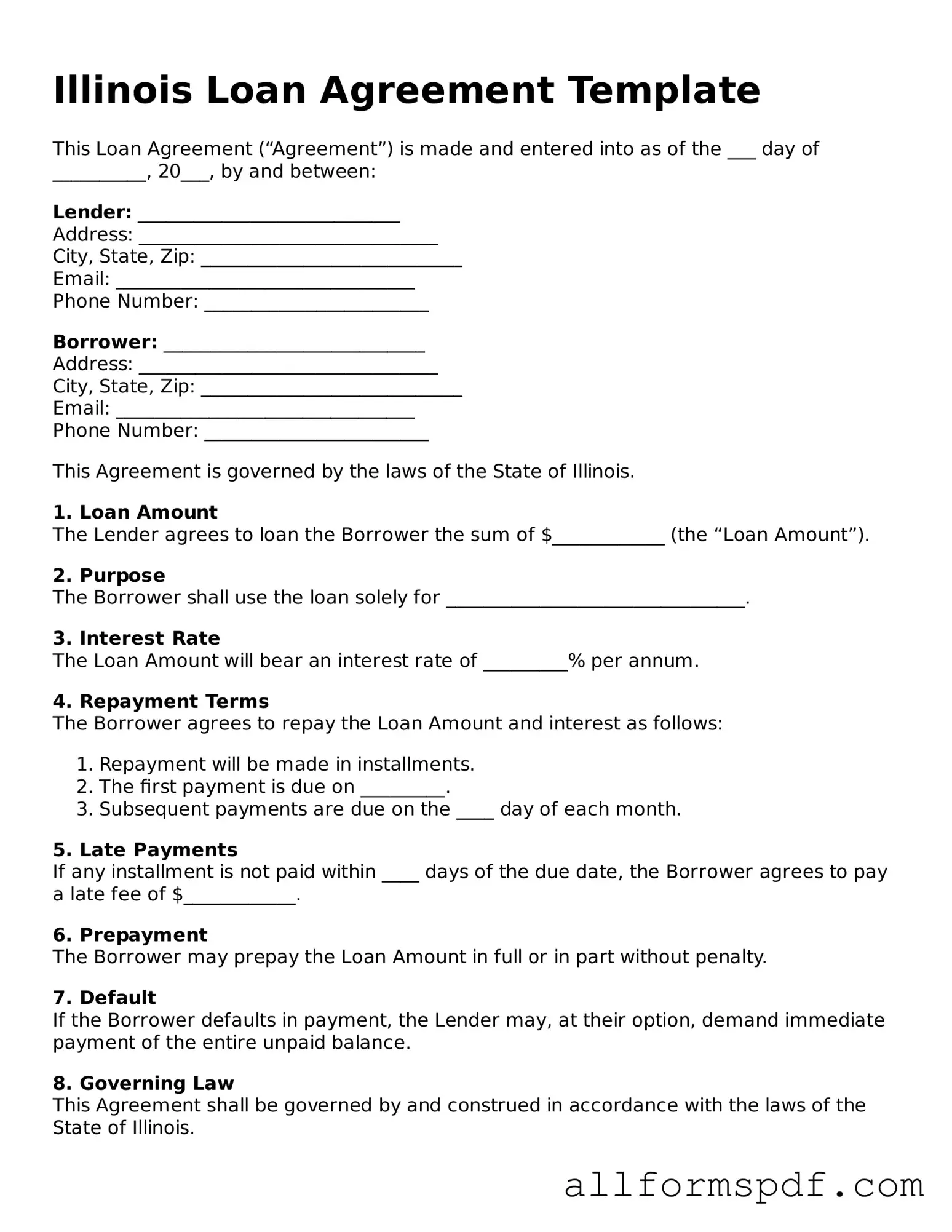Fillable Loan Agreement Form for Illinois
The Illinois Loan Agreement form is a legal document used to outline the terms and conditions of a loan between a lender and a borrower in the state of Illinois. This form serves to protect both parties by clearly defining their rights and responsibilities. Understanding its components is essential for anyone involved in a lending arrangement.
Create My Loan Agreement Now
